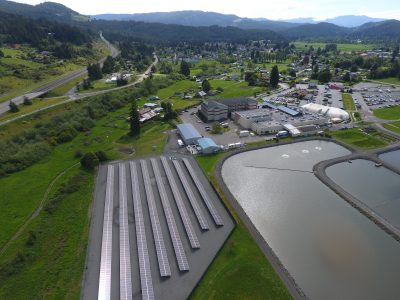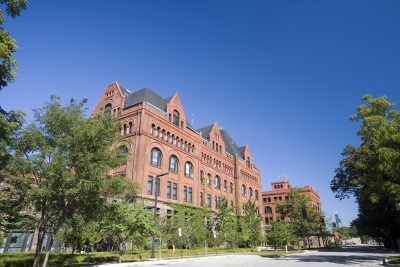Guest Post By Ruth Gratzke, President of Siemens Smart Infrastructure
I recently came across some startling numbers from the National Oceanic and Atmospheric Administration about the frequency of major weather and climate disasters in the U.S. We’ve experienced 291 events with damages or costs of at least $1 billion since 1980. And their recurrence doesn’t seem to be slowing down. As the NOAA figures indicate, we’ve had 10 or more of these events in eight of the past 10 years.
Joining these numbers are the devastating news stories we’ve seen recently as power outages gripped Texas and wildfires blazed across California. In a couple of months, we’ll be back in hurricane season, with last year marking the most active season yet.
At the same time, we’re seeing a renewed focus on resiliency and infrastructure, spurred in part by the ASCE’s latest Report Card for Infrastructure and the recently unveiled jobs and infrastructure plan from the White House. There’s momentum for using meaningful investments in infrastructure to help drive our economic recovery and transformative change in our communities.
Among these priorities, particularly as we transition to cleaner energy and electrify transportation to address climate change, is the modernization of our electric grid. During ASCE’s virtual summit last month highlighting the report card’s release, I had a chance to talk about how Siemens is engaging in this work to make our grid smarter, reduce risk to today’s shocks and drive a zero-carbon future for the long term. Here are a few of the points I shared and why we’re excited about what’s possible.
- Distributed energy systems like microgrids are rising to the challenge, even when tested against once-in-a-century ones. We saw this recently at Blue Lake Rancheria, a Native American reservation in Northern California, which uses our microgrid management software. The controller’s response to fluctuations in demand prevented the microgrid from shutting down during the pandemic and enabled it to “island,” or disconnect, from the larger network to provide backup power for emergency services when wildfires forced widespread outages. As a result, the microgrid has been credited with saving multiple lives.

- Investments to transform our power infrastructure can help drive equity. As we look to intelligent energy systems to deliver reliable power when severe weather strikes, let’s also recognize how they can pave the way for a community’s sustainable future. Our partnership with Bronzeville in Chicago, where we’re working with ComEd to support the first utility-operated microgrid cluster in the United States, is one example of a project enabling the resiliency and efficiency important to the neighborhood’s revitalization with the use of cleaner energy.

Bronzeville in Chicago, the first utility-operated microgrid cluster in the United States, is one example of a project enabling the resiliency and efficiency important to the neighborhood’s revitalization with the use of cleaner energy. - Cybersecurity is essential as grid operations become more complex. As more operational technology comes online, we’ll need to maintain the integrity of our energy systems through robust security. By turning to automated controls as software systems increase in sophistication and operation speed accelerates, we can use technology to help predict, prevent and quickly respond to disruption.
- The grid is the most complex machine ever built and has many stakeholders. So we’ll need to address different needs in different parts of the country and, in some cases, improve components more than a century old. The good news is that technology can be quickly and easily installed to improve reliability, optimize network performance and minimize operating costs.
- And we expect demands on the grid to further increase with the electrification of transportation. Estimates have put the number of electric vehicles in the U.S. nearing 20 million by 2030, a significant increase from the one million EVs in 2018. Such demand will need to be effectively and responsibly managed through grid modernization and the scaling of charging infrastructure.
Like other infrastructure projects, grid investments are a win for jobs and economic growth. But they are also vital to protecting lives and livelihoods from major weather and climate disasters. Over the past year, we’ve seen what we can achieve, together, in times of crisis. Now we have the chance to build on this progress with national attention on infrastructure. Companies like Siemens are ready to harness today’s technologies to help move the country forward. By applying an innovative spirit and collaboration to our energy future, we can make this decade one of action and greater resiliency.
